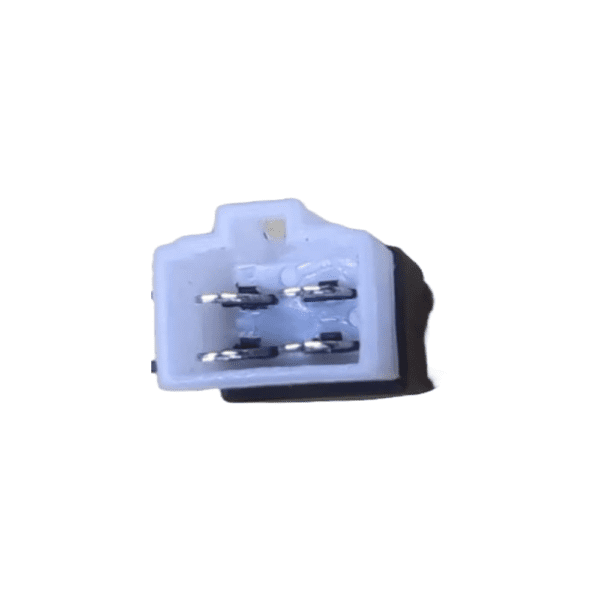The CASE 5100-0401 MSSL 4 Pin Diode—III is a critical component in modern electronic circuits designed to offer reliable performance in various applications. This article delves into the diode’s technical specifications, uses, benefits, challenges, and future developments, providing a thorough understanding for engineers, designers, and enthusiasts alike.

Technical Specifications
Overview: The CASE 5100-0401 MSSL 4 Pin Diode—III is a versatile semiconductor device characterized by its robust design and efficient performance. Here, we discuss its key specifications and features.
Pin Configuration
- Pin 1: Anode
- Pin 2: Cathode
- Pin 3: N/C (No Connection)
- Pin 4: N/C (No Connection)
Electrical Characteristics
- Maximum Reverse Voltage: 50V
- Forward Voltage Drop: 0.7V at 1A
- Maximum Forward Current: 3A
- Reverse Recovery Time: 100ns
Mechanical Characteristics-
- Package Type: TO-220
- Dimensions: 4.5mm x 7.5mm x 12mm
- Mounting Type: Through-hole
Thermal Characteristics
- Operating Temperature Range: -55°C to 150°C
- Thermal Resistance Junction-to-Ambient: 50°C/W
Applications-
Common Uses: The CASE 5100-0401 MSSL 4 Pin Diode – III finds applications in various electronic devices and circuits. Here are some of the most common uses:
- Power Rectification: Used in power supply circuits to convert AC to DC.
- Signal Processing: Utilized in signal modulation and demodulation circuits.
- Overvoltage Protection: Protects sensitive components from voltage spikes.
- Switching Applications: Acts as a switch in high-frequency circuits.
Industry-Specific Applications
- Automotive Electronics: For power management in-vehicle systems.
- Consumer Electronics: Found in devices like televisions and radios.
- Industrial Equipment: Used in machinery for power regulation.
Benefits-
Performance Advantages
- High Efficiency: Offers low forward voltage drop, reducing power loss.
- Reliability: Robust design ensures long-term stability and performance.
- Versatility: Suitable for a wide range of applications due to its adaptable design.
Cost-Effectiveness
- Affordability: Cost-effective compared to other high-performance diodes.
- Long Lifespan: Reduces the need for frequent replacements, saving costs over time.
Challenges and Limitations-
Performance Constraints
- Thermal Management: Requires adequate heat dissipation to prevent overheating.
- Voltage Limitations: Limited to 50V reverse voltage, which may not be suitable for all applications.
Manufacturing Considerations
- Quality Control: Variability in production quality can affect performance.
- Supply Chain Issues: Availability may be affected by supply chain disruptions.
Latest Innovations
Technological Advances: Recent advancements in diode technology have led to improvements in performance and efficiency. Innovations include:
- Enhanced Materials: New materials improve thermal conductivity and performance.
- Miniaturization: Smaller packages for compact electronic designs.
Future Trends
- Bright Diodes: Integration with intelligent technologies for adaptive performance.
- High-Voltage Variants: Development of diodes capable of handling higher voltages.
Comparative Analysis
CASE 5100-0401 vs. Competitors
- Performance Comparison: Evaluating key metrics such as forward voltage drop and reverse recovery time.
- Cost Analysis: Comparing pricing with similar diodes in the market.
- Application Suitability: Assessing which applications are best served by CASE 5100-0401 versus competitors.
User Guides or Tutorials
Installation Guide
- Preparation: Ensure the circuit is powered off before installation.
- Mounting: Insert the diode into the PCB according to the pin configuration.
- Soldering: Solder the pins to secure the diode in place.
- Testing: Verify the diode’s functionality with a multimeter.
Troubleshooting
- Common Issues: Identifying and resolving issues such as incorrect installation or diode failure.
- Diagnostic Tips: Using diagnostic tools to test diode performance.
Conclusion
The CASE 5100-0401 MSSL 4 Pin Diode – III is a critical component in modern electronics, offering reliable performance and versatility across various applications. Understanding its specifications, benefits, and potential challenges is essential for effectively utilizing this diode in electronic designs.
For engineers and designers, staying informed about technological advancements and conducting comparative analyses with other components will ensure the optimal use of CASE 5100-0401 in future projects.


